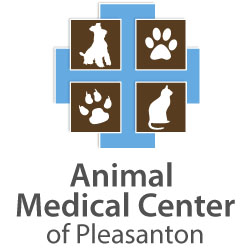Preparing for Your Cat’s Vet Visit: A Helpful Checklist

A successful vet visit for your cat starts with proper preparation. Here’s a detailed checklist to ensure your cat feels comfortable and secure during their visit to Animal Medical Center of Pleasanton:
Include a Familiar Blanket:
- Emotional Comfort: A soft, familiar blanket can create a soothing environment for your cat, helping to ease nerves during the doctor visit.
- Familiar Scent: Using bedding that carries your scent will remind your cat of home, providing additional comfort.
Familiarize the Carrier:
- Create a Positive Association: Leave the carrier accessible days in advance. Place treats and toys inside, encouraging your cat to see the carrier as a safe space rather than a place of confinement.
- Positive Reinforcement: Reward your cat with treats and praise whenever they enter the carrier, reinforcing the behavior positively.
Avoid Feeding Right Before the Visit:
- Prevent Gastrointestinal Upset: To avoid car sickness, refrain from feeding your cat too close to the appointment time. A light snack may be acceptable, but a full meal should be avoided.
Secure the Carrier Properly:
- Safety First: Using a seatbelt to secure the carrier in your vehicle will help prevent unnecessary movement or turbulence during the trip. This will help keep your cat calm and secure.
- Comfortable Placement: Position the carrier in an area that is climate-controlled, away from direct sunlight or drafts.
Communicate Your Cat’s Anxieties:
- Speak to the Staff: Let the receptionist know if your cat experiences anxiety or fear in new environments. This allows the team to provide tailored care and attention to make your visit easier.
- Consider Timing: If possible, schedule your appointment during quieter times at the clinic to minimize your cat’s stress.
Bring a Comfort Item:
- Familiar Objects: Bringing your cat’s favorite toy or blanket can help provide a sense of security. It can also be comforting during examination or waiting times.
- Calming Aids: Discuss with your vet about calming aids, such as sprays or treats enriched with calming pheromones, to ease anxiety.
Prepare Specific Questions:
- List Your Concerns: Write down specific questions to ask during the appointment. Whether it’s about diet changes, behavioral questions, or health concerns, having a list will ensure you do not forget important topics.
Post-Visit Comforting:
- Transitioning Back Home: After the appointment, ensure your cat has access to a relaxing space at home. Spend some downtime with them, allowing them to adjust back comfortably.
- Observing Behavior: Monitor your cat’s behavior after the visit and watch for signs of distress or changes in eating habits. If anything seems unusual, follow up with your veterinarian.
By following these detailed steps, you can make the visit to Animal Medical Center of Pleasanton a more positive experience for both you and your feline companion.

